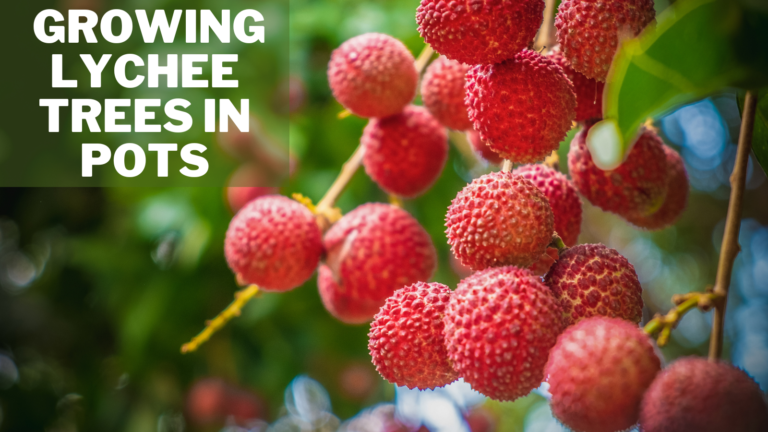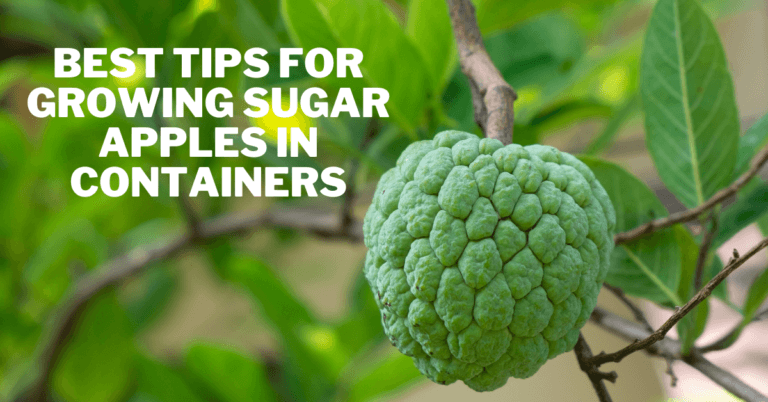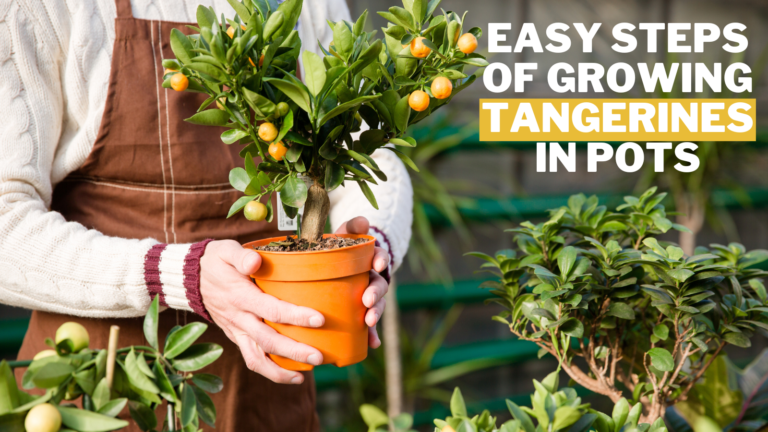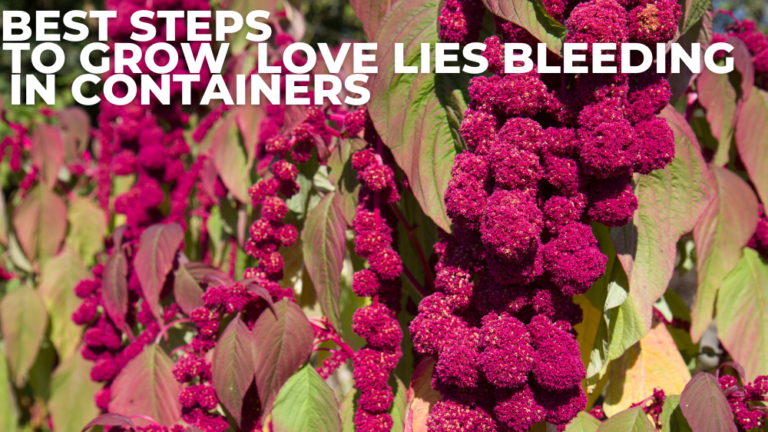Ultimate Guide To Indoor Orchid Plant Care
Orchids are stunning, exotic houseplants that thrive indoors with proper care. Indoor orchid plant care requires light, water, and humidity to keep these stunning houseplants thriving and blooming beautifully.
Whether you're a beginner or an experienced plant parent, understanding their unique needs is key. This guide covers essential orchid care tips, from choosing the right potting mix to ensuring long-lasting, vibrant flowers in your home.
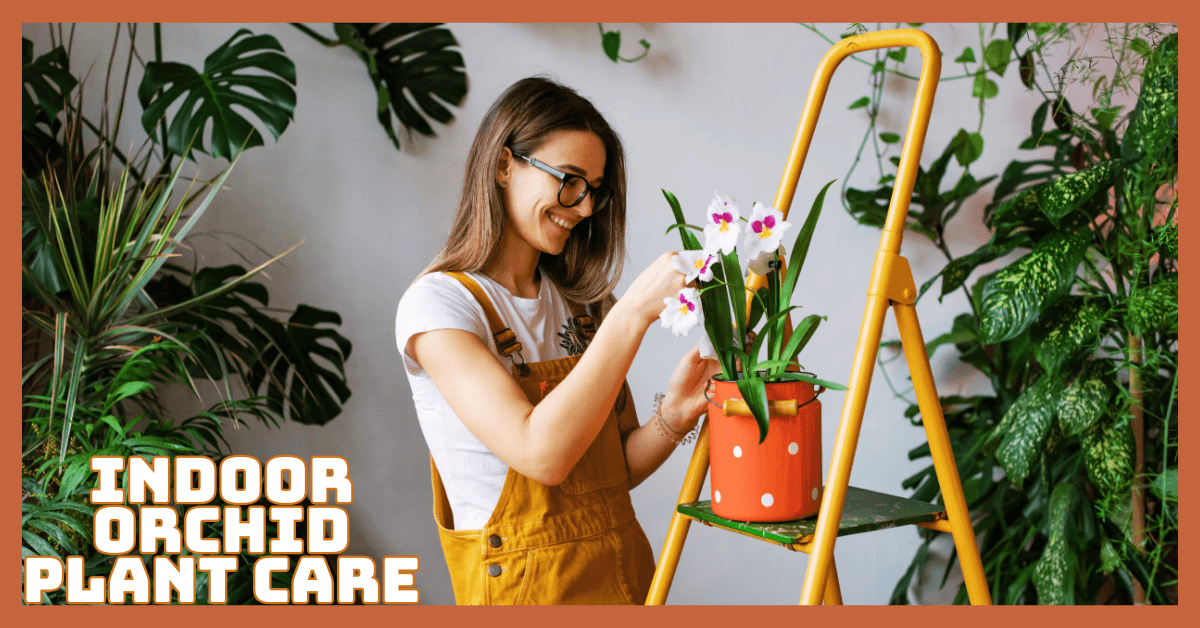
Ultimate Guide To Indoor Orchid Plant Care
1. Understanding Orchids
Orchids belong to the Orchidaceae family, one of the most prominent plant families in the world, with over 25,000 species. Among these, several varieties are popular as indoor plants, including:
Phalaenopsis (Moth Orchid)
Phalaenopsis, or Moth Orchid, is a beginner-friendly orchid ideal for USDA zones 10–12 but thrives indoors anywhere. With elegant, arching stems and broad, glossy leaves, it produces long-lasting white, pink, or purple blooms. It flourishes in indirect light, moderate humidity, and weekly watering, making it perfect for home decor.
Cattleya
Thriving in USDA zones 9–12, Cattleya orchids produce large, fragrant flowers in vivid colours. They need a lot of humidity, good ventilation, and bright, indirect light.
Their thick, leathery leaves store moisture, making them resilient. These elegant orchids, with their showy, exotic blooms, add a tropical charm to indoor spaces.
Dendrobium
Suitable for USDA zones 9–12, Dendrobium orchids have tall, cane-like stems adorned with clusters of flowers. They thrive in bright light and cooler temperatures, making them perfect for indoor cultivation.
Their slender stems and delicate blooms create a graceful display, adding beauty and sophistication to homes and offices with minimal maintenance.
Oncidium (Dancing Lady Orchid)
Found in USDA zones 9–12, Oncidium orchids boast vibrant, frilly flowers resembling dancing figures. They need bright, indirect light, high humidity, and good airflow.
Their small, intricate yellow, red, or pink blooms bring lively energy to any indoor space, making them a cheerful and eye-catching addition.
Vanda
Best for USDA zones 10–12, Vanda orchids are known for their vivid, long-lasting flowers and aerial roots. They require intense light, frequent watering, and high humidity.
Often grown in hanging baskets, they create an exotic display, adding a striking and dramatic touch to indoor spaces with their bold, intricate blooms.
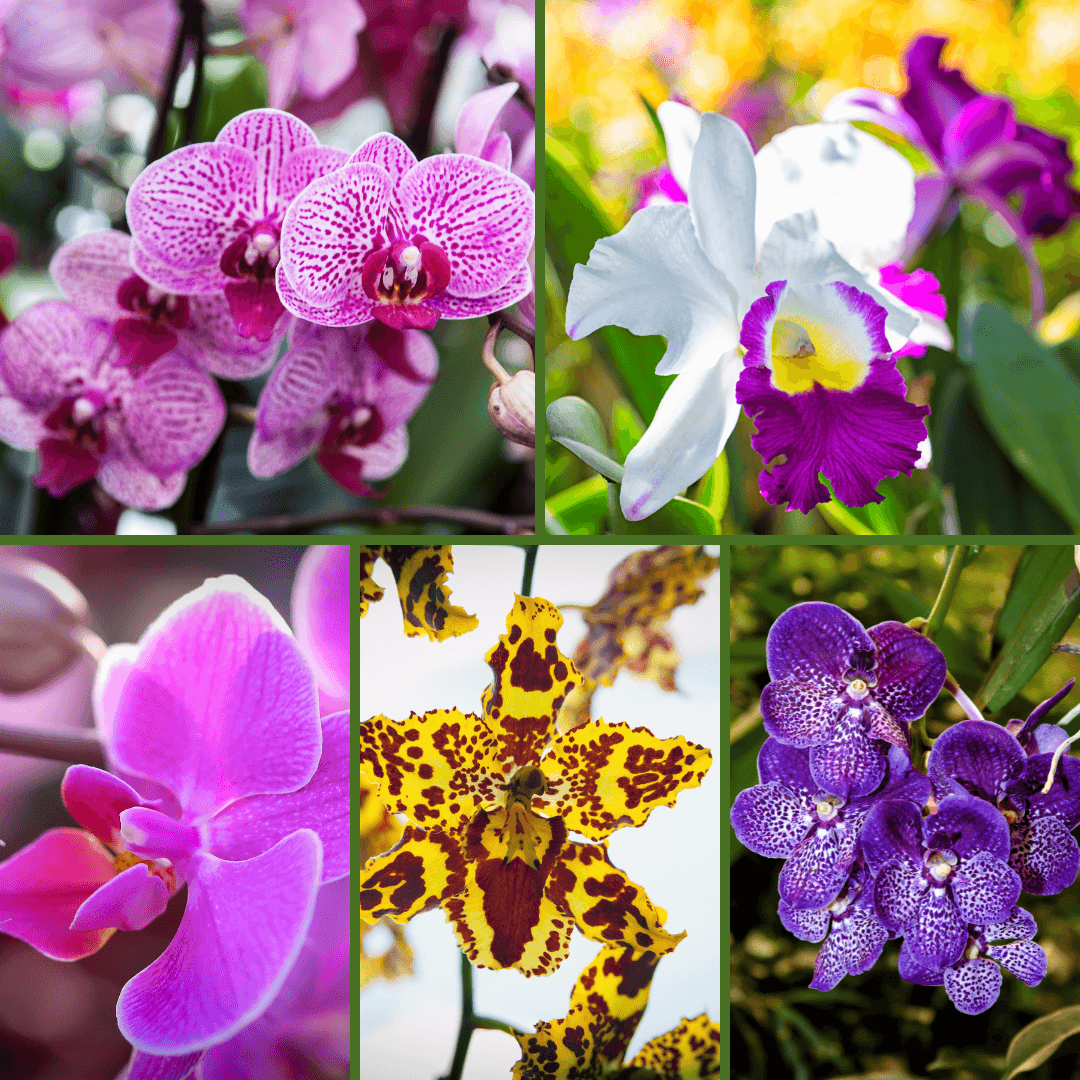
2. Choosing The Right Environment
Lighting
Proper indoor orchid plant care includes providing the right balance of light to prevent leaf scorch and encourage healthy blooming. To ensure healthy growth, follow these lighting guidelines for different orchid types:
Phalaenopsis
This orchid does best in bright, indirect light. Overexposure to direct sunshine can scorch its delicate leaves. Therefore, placing it near a window north or east window is best.
Cattleya
Cattleya orchids prefer bright light but should avoid direct sunlight to prevent leaf damage. A south-facing window offers ample light without the risk of burning the leaves.
Dendrobium
Dendrobiums require bright light but can tolerate a little shade. Morning sunlight is ideal as it provides enough energy without the intensity of the midday sun, preventing stress.
Oncidium
Oncidiums need bright, indirect light to flourish. Direct sunlight can damage them, so placing them in a spot with filtered light helps them thrive without compromising their health.
Vanda
Vanda orchids thrive in intense, direct light. A sunny window with good airflow is ideal, as they require intense light for optimal growth and bloom. However, they also need ventilation to prevent overheating.
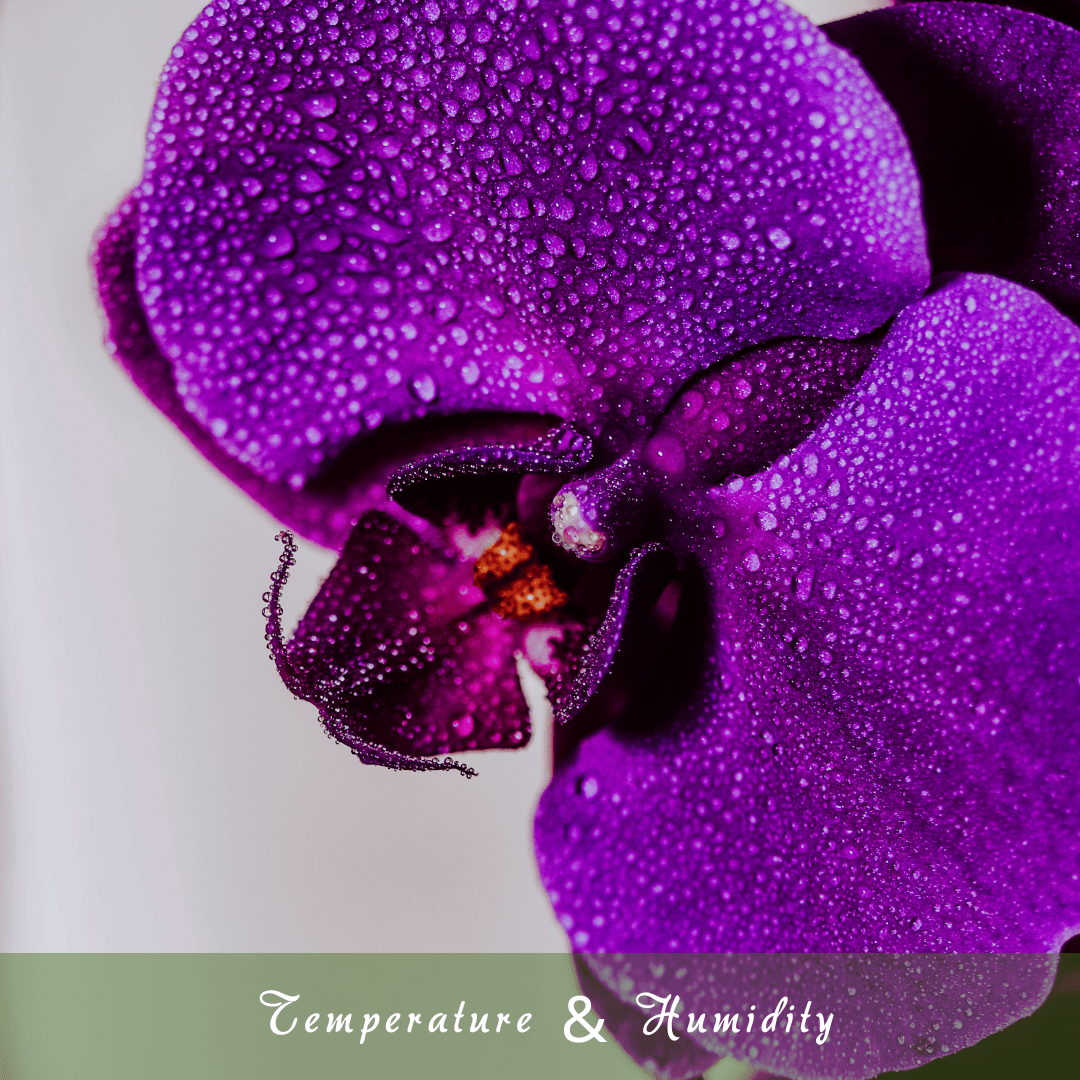
Temperature & Humidity
Orchids thrive in specific temperature and humidity conditions. Maintaining the right balance ensures healthy growth and vibrant blooms.
Generally, orchids prefer a temperature range of 65-75°F (18-24°C) and 50-70% humidity levels. Here's how to cater to each type:
Phalaenopsis
This orchid prefers temperatures between 65-75°F and moderate humidity. It thrives in stable conditions, so avoid fluctuations to prevent stress. Consistent warmth helps maintain healthy growth and blooming.
Cattleya
Cattleya orchids thrive in warmer temperatures between 70-85°F with high humidity. Ensure their environment remains warm, as sudden temperature drops hinder their growth and the blooming cycle.
Dendrobium
Dendrobiums favour cooler temperatures, ideally between 60-75°F, with moderate humidity. They can tolerate slightly lower temperatures but prefer consistent conditions to maintain their health and encourage flowering.
Oncidium
Oncidium orchids prefer temperatures ranging from 65-75°F and high humidity. This range supports their growth and vibrant blooms. Ensure good airflow to avoid fungal issues arising from stagnant conditions.
Vanda
Vanda orchids require warm temperatures between 75-85°F, along with high humidity. Good airflow prevents overheating, while humidity keeps the roots hydrated and healthy, fostering optimal blooming.
Air Circulation
Proper indoor orchid plant care ensures good air circulation to prevent fungal and bacterial issues while promoting healthy growth.
Keeping orchids in a well-ventilated area ensures fresh airflow and reduces the risk of diseases. Avoid placing them in areas with stagnant air, such as near walls or corners. Here's how to manage airflow for each type:
Phalaenopsis
Phalaenopsis orchids thrive with moderate airflow. Drafts can stress plants and interfere with their growth, so keep them out of drafty regions. Steady air movement ensures healthy conditions.
Cattleya
Cattleya orchids require strong airflow to thrive, which helps prevent fungal and bacterial infections. Proper ventilation ensures that humidity levels don’t become too high, promoting healthy root and leaf growth.
Dendrobium
Good air circulation is beneficial for dendrobium orchids, particularly in warmer months. Adequate airflow helps prevent excessive moisture buildup, reduce the risk of rot, and encourage robust growth and flowering.
Oncidium
Oncidium orchids need proper airflow around their leaves to keep them dry. This guarantees the plant's continued health and lowers the likelihood of fungal infections. Avoid stagnant air to promote better health.
Vanda
Vanda orchids require excellent airflow for their aerial roots to breathe. With vigorous air movement, their roots can absorb moisture and oxygen properly, supporting their overall health and blooming.
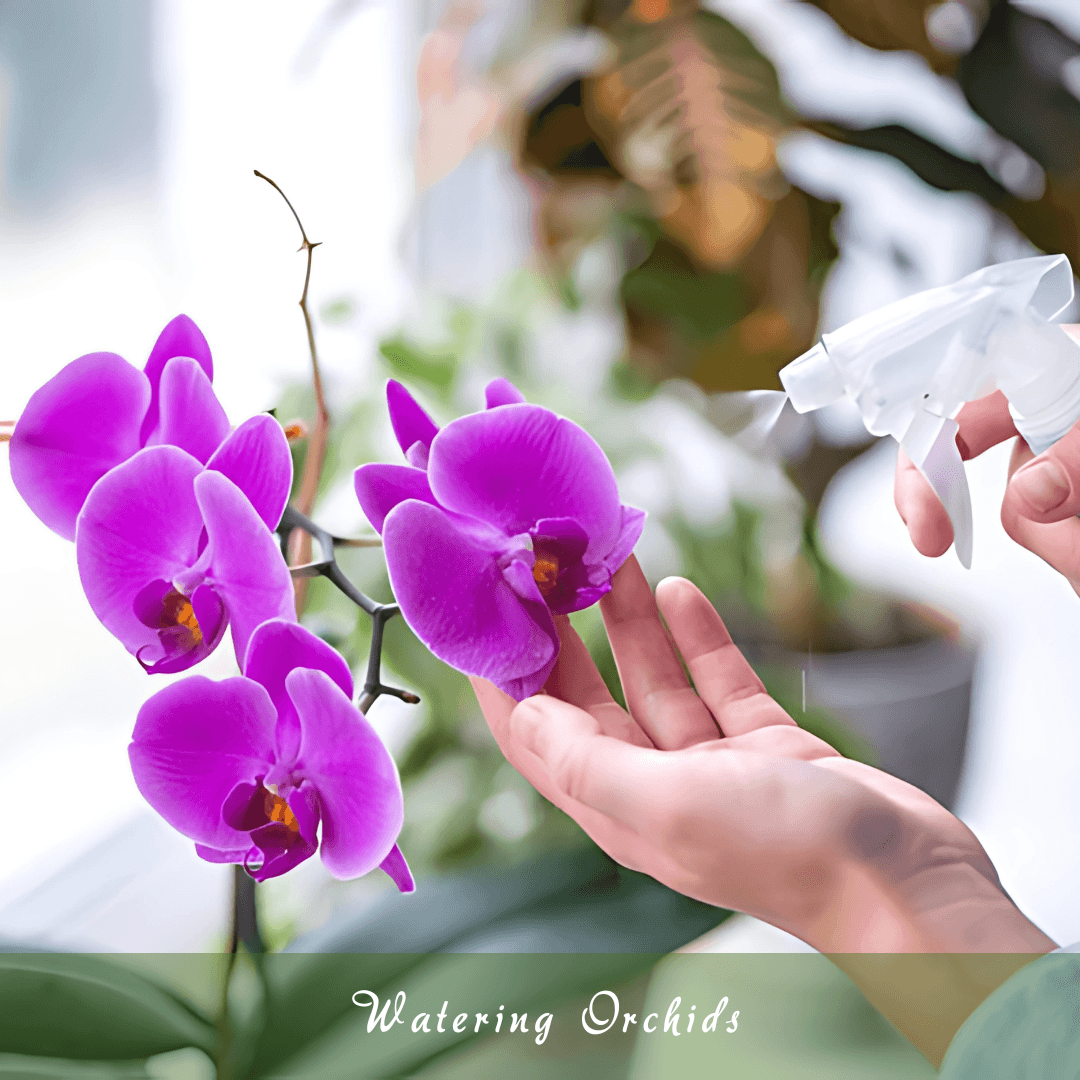
3. Watering Orchids
Watering is crucial for orchids, as too much or too little can harm the plant. Generally, orchids should be watered when the soil feels dry, and water should not be allowed to sit in the pot. Ensure proper drainage to avoid root rot. Here's how to water different types:
Phalaenopsis
Water Phalaenopsis orchids every 7-10 days. Let the potting media dry out between waterings to avoid root rot. Ensure water drains freely to keep the roots healthy and avoid stagnant moisture.
Cattleya
Water Cattleya orchids thoroughly, but let the medium dry out between waterings. Overwatering can lead to root rot. Do not submerge the roots in water to maintain proper airflow and drainage.
Dendrobium
Dendrobium orchids need watering when the medium is nearly dry, typically every 7-10 days. Avoid overwatering, as this may result in root rot. Make sure the drainage is adequate to prevent too much dampness.
Oncidium
Water Oncidium orchids every 5-7 days, keeping the medium moist but not soggy. Do not let the roots sit in water. A balance of moisture and airflow is vital for their health.
Vanda
Vanda orchids thrive in high humidity and require frequent watering every 3-4 days. Ensure the roots are well-hydrated, but avoid letting them sit in stagnant water to prevent rot.
Overwatering
Watering indoor orchid plants properly is essential because overwatering can cause root rot and plant failure. Here’s how to water orchids correctly:
- Orchids need less water during cooler months, so once a week is sufficient. In warmer months, increased humidity and heat require more frequent watering, around twice a week.
- Room-temperature water is ideal for orchids, as extreme temperatures can shock their roots. Rainwater or distilled water is better, as tap water can contain harmful chemicals and salts for orchids.
- If you water in the morning, the plant will have time to dry before evening. This lowers the possibility of fungus growth and allows the roots to absorb moisture effectively during the day.
- Orchids must never sit in standing water, as this leads to root rot. To keep the roots healthy and oxygenated, ensure the pot has drainage holes and let the water run off entirely.
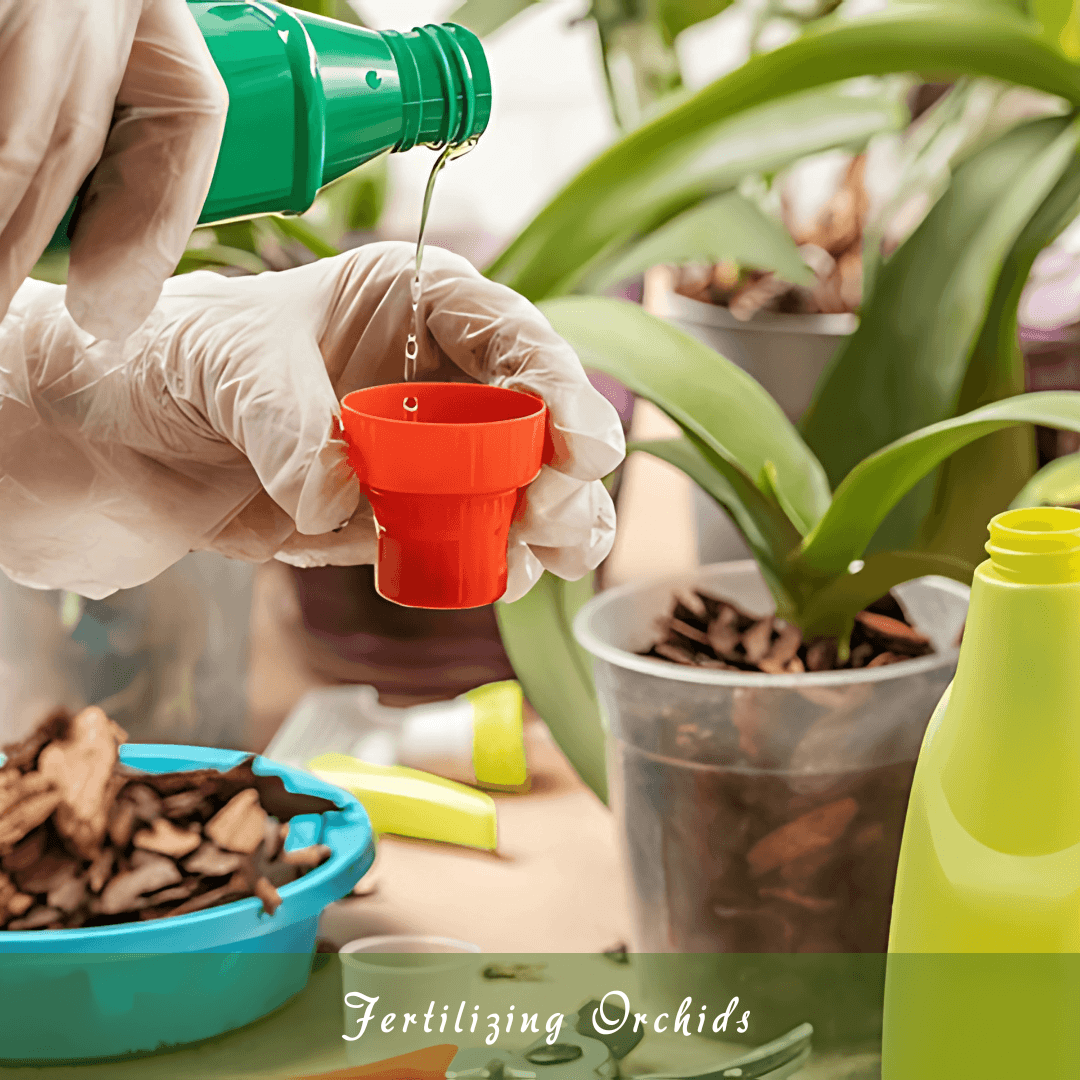
4. Fertilizing Orchids
The care of indoor orchid plants depends heavily on fertilization, which supplies the nutrients needed for muscular development and colourful blooms while guarding against damage from excessive fertilization.
Throughout the growing season, fertilize once a month; do not fertilize during dormancy. Here's how to fertilize each type:
Phalaenopsis
Fertilize with a balanced orchid fertilizer every two weeks during the growing season to encourage healthy growth and blooming. Avoid fertilizing during dormancy to prevent nutrient buildup that can harm the plant.
Cattleya
Fertilize every two to three weeks throughout the growing season to encourage strong root development and vibrant blooms. Overfertilization can result in a buildup of salt and harm to the roots.
Dendrobium
Apply a light fertilizer every 2-3 weeks, using a diluted solution to prevent overfeeding. Fertilizing during the growing season ensures healthy growth but reduces during dormancy to allow rest periods.
Oncidium
Fertilize once weekly when growth is active, usually in the spring and summer. Reduce fertilization during the dormant period to avoid nutrient excess and stress.
Vanda
Fertilize weekly during the growing season, using a balanced fertilizer to encourage robust growth and frequent flowering. Ensure proper watering before fertilizing to prevent root burn from concentrated nutrients.
5. Potting And Repotting Orchids
Choosing the right potting medium is crucial for orchid health, as it provides the necessary drainage, airflow, and nutrients for healthy root development.
Orchid-specific mixes, like bark, sphagnum moss, or perlite, are best for most orchids. Avoid regular soil, as it can lead to root rot.
Potting Tips For Each Orchid Type
Phalaenopsis
A bark-based mix provides excellent drainage and moisture retention, preventing root rot while keeping roots hydrated. This mix mimics their natural environment, ensuring a healthy air circulation and water absorption balance balance.
Cattleya
A coarse bark mix lowers the chance of rot by improving air circulation around the roots. It provides necessary aeration, ensuring the roots dry out properly between waterings while still retaining some moisture.
Dendrobium
A combination of bark and perlite offers ideal drainage for Dendrobium orchids. The bark retains moisture, while perlite improves aeration, preventing excess water accumulation and ensuring healthy root development.
Oncidium
A loose, well-draining bark mix supports Oncidium orchids by preventing waterlogged roots. This mix allows oxygen to reach the roots easily, reducing fungal infections and promoting steady growth.
Vanda
Sphagnum moss or a moisture-retentive yet well-draining mix suits Vanda orchids. Their aerial roots absorb moisture efficiently while remaining aerated, preventing dehydration without risking rot in humid environments.
When To Re-Pot Orchids
Repotting orchids is necessary every 1-2 years to refresh the potting medium, promote healthy root growth, and prevent overcrowding.
Regular repotting is essential to indoor orchid plant care, helping to maintain healthy roots, refresh the potting medium, and avoid overcrowding for optimal growth and blooming. Here's when to report for each type:
Phalaenopsis
Repot every 1-2 years or when roots become crowded. Fresh potting mix improves aeration and drainage, preventing root rot while encouraging healthy growth and future blooms. Avoid repotting during flowering.
Cattleya
Repot after blooming or when the roots outgrow the pot. This prevents stress on the plant and ensures better nutrient absorption. A fresh mix maintains aeration, reducing the risk of fungal infections or root suffocation.
Dendrobium
Repot when roots extend beyond the container or the potting medium deteriorates. A fresh mix enhances drainage and root support, preventing overcrowding and promoting healthier growth in the new medium.
Oncidium
Repot every 1-2 years, especially if the potting mix breaks down. Decomposed media retain excess moisture, leading to root rot. A fresh blend ensures optimal aeration, maintaining root health and plant vigour.
Vanda
Repot when the roots outgrow the pot or the mix decomposes. Their aerial roots require space and a fresh medium to maintain moisture balance, prevent disease, and ensure continuous growth.
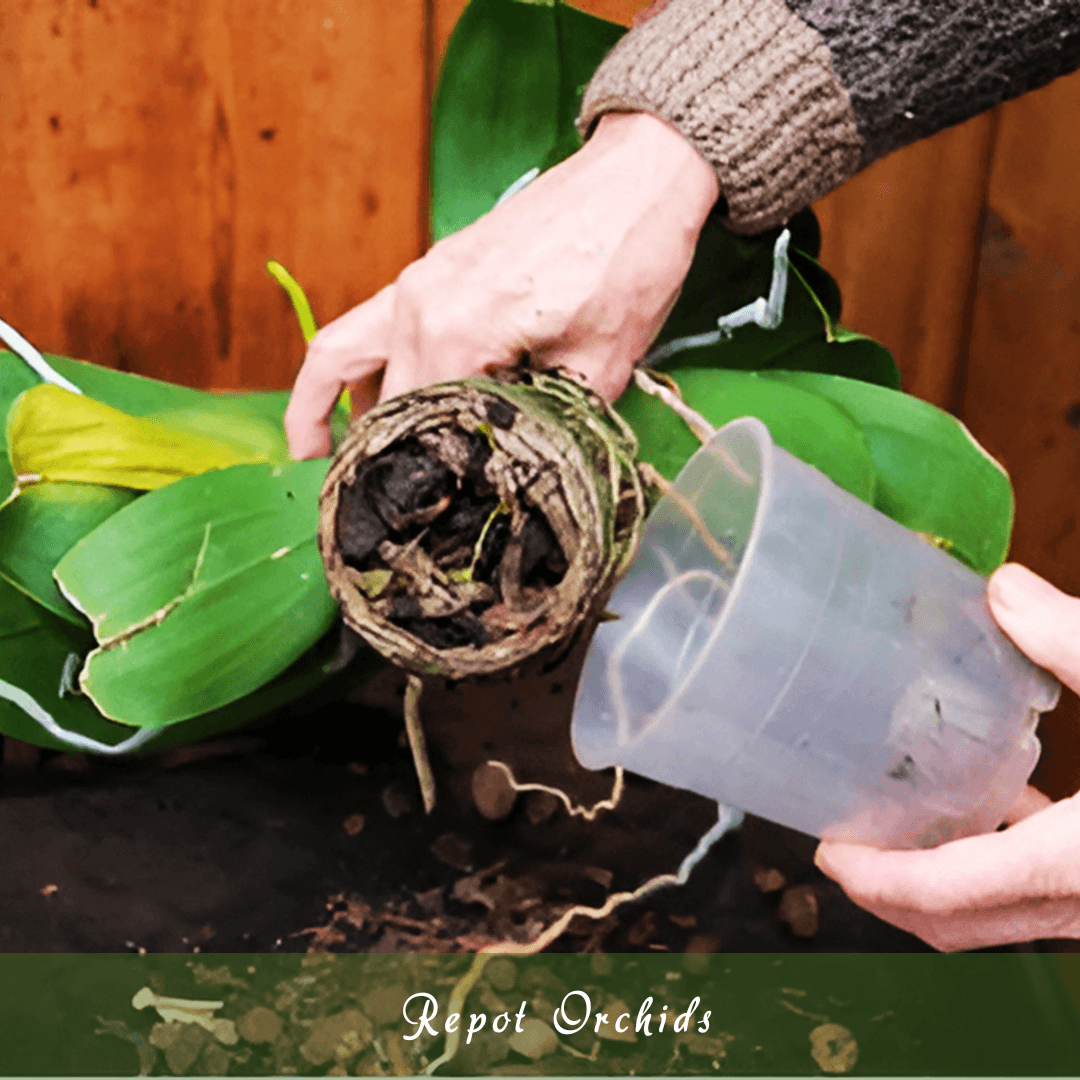
How To Re-Pot Orchids
Repotting orchids requires careful handling to avoid damaging delicate roots. Place the plant in a new pot with new potting material after carefully removing it from its pot and cutting off any dead or rotting roots. Ensure the roots are well-supported and not overcrowded. Here are tips for each type:
Phalaenopsis
Keep roots above the potting medium to prevent rot and ensure proper airflow. These orchids prefer a loose setup that allows roots to breathe while retaining enough moisture for healthy growth.
Cattleya
Spread the roots out evenly and avoid burying them too deeply. Good air circulation around the roots prevents rot and encourages strong, healthy growth, helping the plant establish itself quickly in its new pot.
Dendrobium
Position the plant upright, ensuring the base is stable. If needed, use a stake to support tall stems. A well-secured plant encourages proper growth and prevents it from toppling over.
Oncidium
Choose a well-draining potting medium and provide support for the plant. Since Oncidium orchids have fine roots, proper aeration and moisture control are essential to maintain root health and prevent decay.
Vanda
Use a basket-style pot to allow roots to hang freely. This mimics their natural growing conditions, ensuring adequate airflow and moisture absorption while preventing rot caused by excessive moisture retention.
Common Indoor Orchid Problems And How To Fix Them
Understanding potential issues and their solutions is key to successful indoor orchid plant care, ensuring your orchids stay healthy, vibrant, and bloom beautifully. Here’s a guide to troubleshoot problems and fix them:
Yellowing Leaves
Problem
Yellowing leaves in orchids are typically a sign of overwatering or insufficient light. The leaves turn yellow when the roots stay too wet, or the plant doesn’t get enough light. This often accompanies a loss of vitality and droopy growth.
Solution
To resolve yellowing leaves, reduce the watering frequency to ensure the potting medium dries out between waterings. Also, move the orchid to a brighter location with indirect light, avoiding direct sunlight that could scorch the leaves.
No Blooms
Problem
Orchids not blooming may result from insufficient light or improper temperature. They need bright, indirect light and a slight night temperature drop to encourage blooming. Without these conditions, blooming can be delayed or not occur at all, even if the orchid is healthy otherwise.
Solution
Place your orchid in a bright, indirect-light location to promote blooms. Ensure it experiences a nighttime temperature drop of 10°F (5°C). Maintaining consistent conditions will help trigger blooming and encourage healthy flower development.
Leaf Spots
Problem
Leaf spots on orchids usually indicate fungal or bacterial infections. Infected leaves may display dark spots, yellow halos, or soft tissue. If left untreated, these infections can spread, weakening the plant and affecting its health.
Solution
Remove infected leaves to prevent the infection from spreading. Place the orchid in a well-ventilated area to increase air circulation. Apply appropriate fungicides or antibacterial treatments to control the disease and promote recovery.
Conclusion
Caring for indoor orchids requires the right balance of light, water, humidity, and airflow. With proper attention, these stunning plants will reward you with vibrant, long-lasting blooms. Choose the right orchid variety for your space and follow specific care guidelines to keep it thriving.
Consistent indoor orchid plant care ensures healthy growth, vibrant blooms, and long-lasting beauty in your home. Patience and consistency allow orchids to flourish indoors, adding elegance and beauty to your home year-round.
I trust you enjoyed this Ultimate Guide To Indoor Orchid Plant Care article. Please stay tuned for more blog posts soon. Take care!
JeannetteZ
>>>Please click here to read my all-inclusive article, About The Essential Companion Planting Guide<<<
>>>Please click here to read my all-inclusive article about Container Gardening<<<
>>>Are you interested in homegrown herbs and medicine? Please click here to find out more about it!<<<
Your Opinion Is Important To Me
Do you have thoughts, ideas, or questions? I would love to hear from you. Please leave me your questions, experiences, and remarks about this article, Ultimate Guide To Indoor Orchid Plant Care, in the comments section below. You can also email me at Jeannette@Close-To-Nature.org.
Disclosure
This post may contain affiliate links. As an Amazon Associate and other affiliate programs, I earn from qualifying purchases at no extra cost to you. Please read my full affiliate disclosure.
You might also enjoy these blog posts:
Indoor Orchid Plants That Transform Your Spaces
A Comprehensive Guide To The Types Of Orchid Plant
A Guide To The Various Types Of Bromeliad Plants
Stunning Types Of Dahlia Plants You’ll Love
How To Stop Anxiety Attacks Fast


